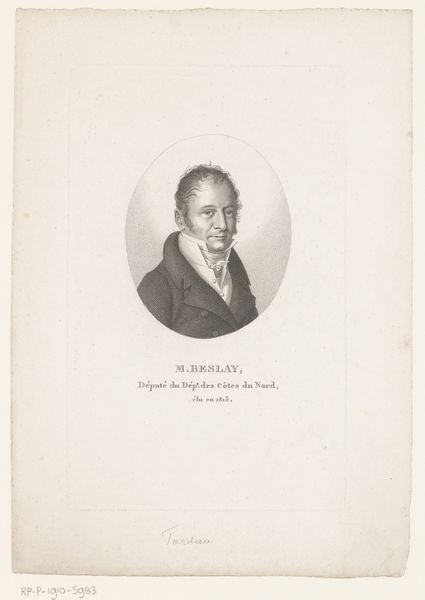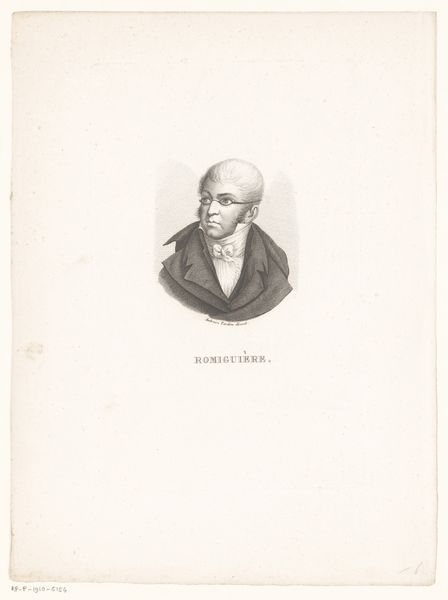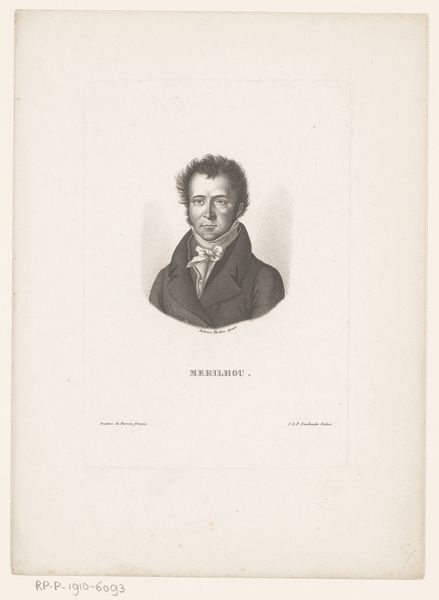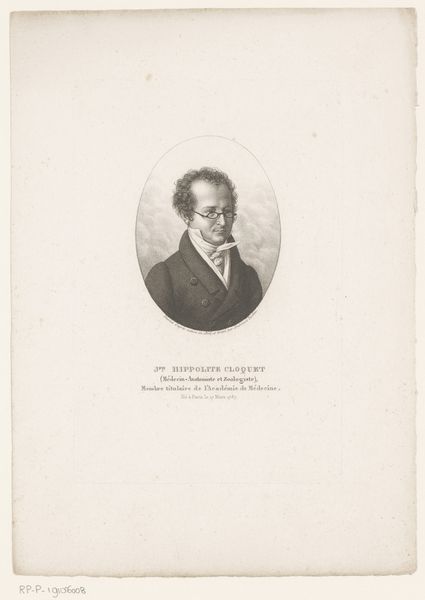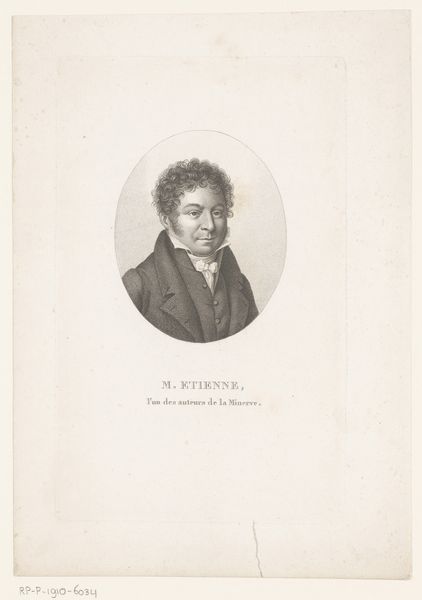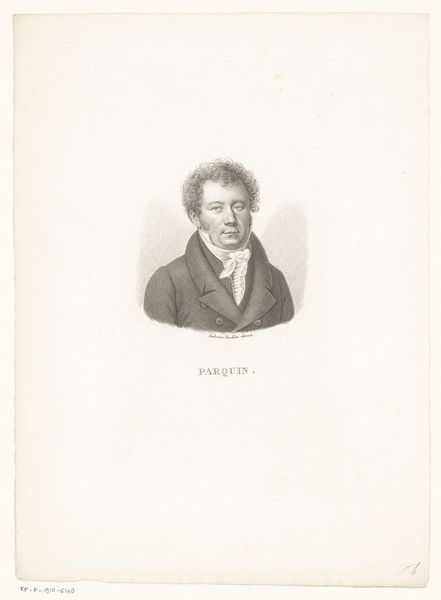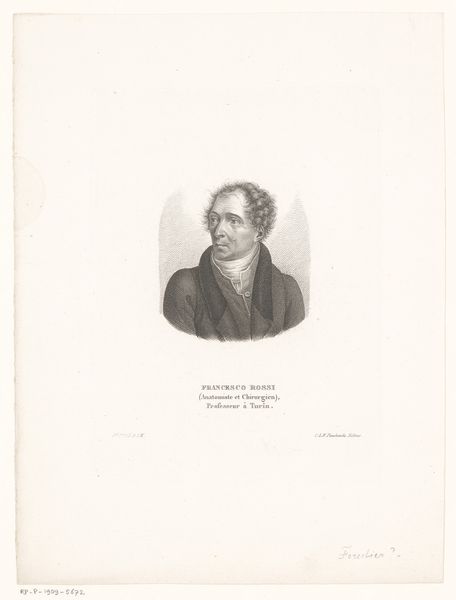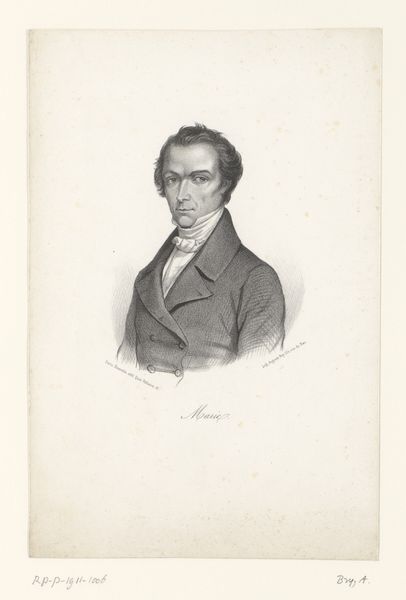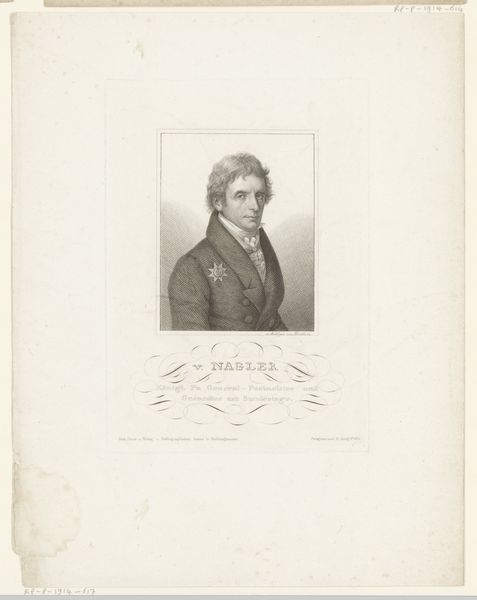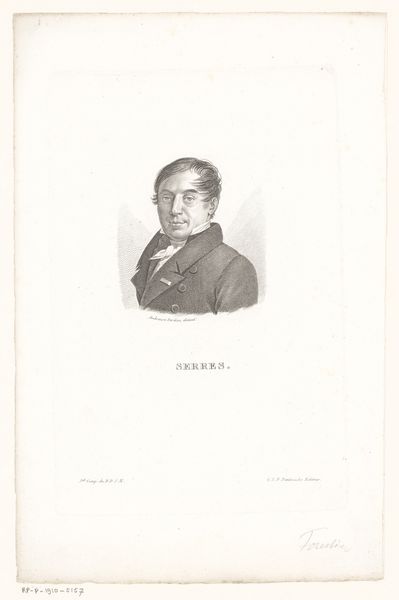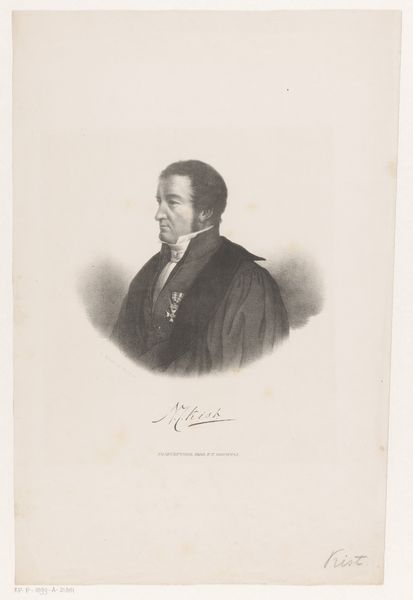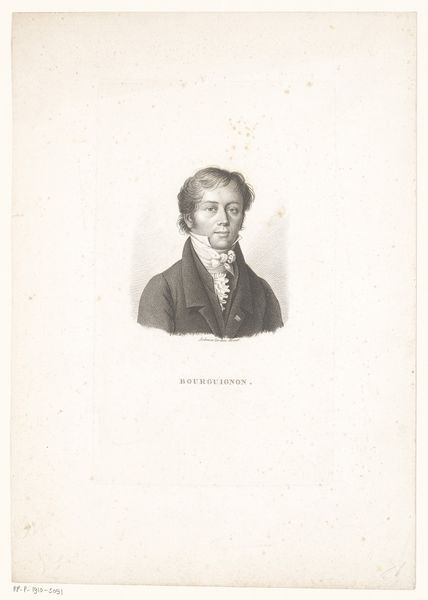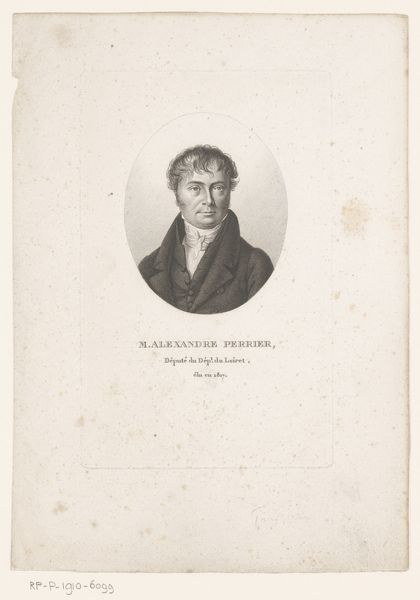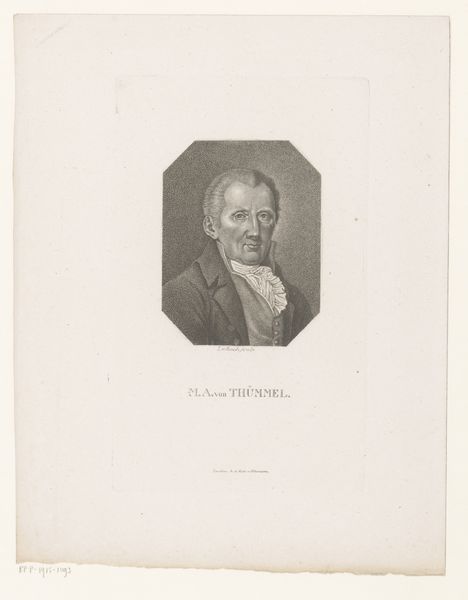
#
pencil drawn
#
photo of handprinted image
#
aged paper
#
light pencil work
#
photo restoration
#
parchment
#
light coloured
#
old engraving style
#
old-timey
#
ink colored
Dimensions: height 227 mm, width 136 mm
Copyright: Rijks Museum: Open Domain
Ambroise Tardieu created this portrait of Charles Pierre Fradin, a deputy of the department of Vienne, using engraving. Fradin lived through a revolutionary period in France. In 1789, the year of his election, the French Revolution shook the foundations of society, challenging the established order of monarchy and aristocracy. In portraits like these, the emphasis on individual achievement and civic duty reflected the revolutionary ideals of equality and meritocracy. While outwardly egalitarian, the revolution was still a highly gendered and classed affair, and the portrait reflects this. Fradin is presented in a manner befitting his status, in a suit and tie. But perhaps the real point is that he is identified as a man of the people, a ‘deputy’ rather than a noble. Fradin’s identity is explicitly linked to his political role, underlining the changing values of French society at the time. The image is a reminder of the complexities inherent in revolutions. While it embodies the ideals of progress and equality, we have to ask, who really benefited?
Comments
No comments
Be the first to comment and join the conversation on the ultimate creative platform.
